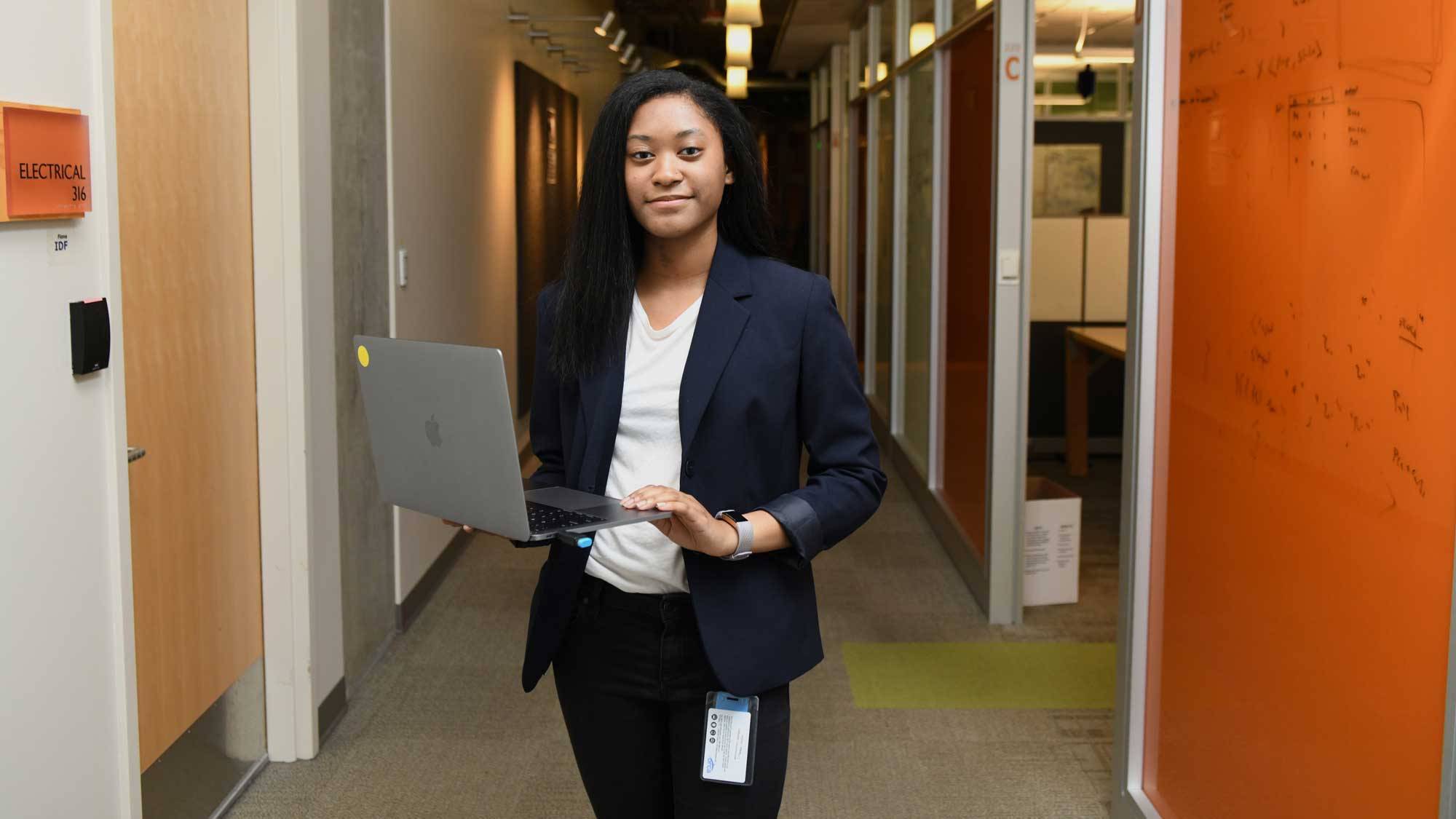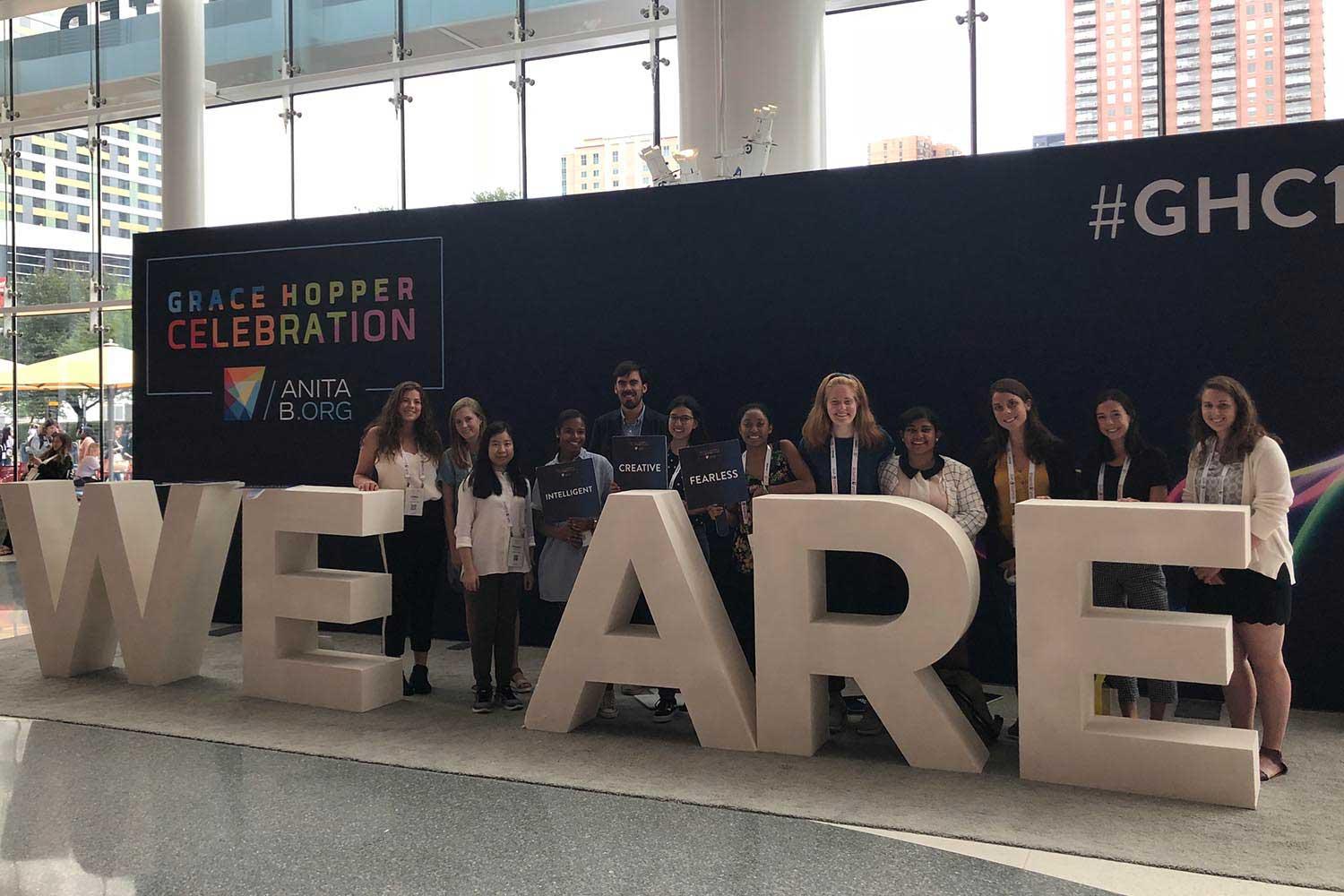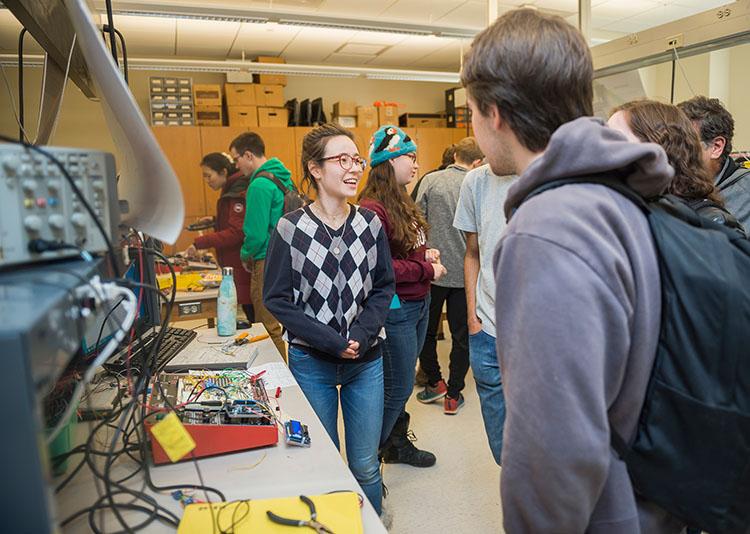Editor’s note: Brittney Chin ’21 spent her summer working at Amazon in Seattle, Wash. At Colgate, she is a computer science major and co-founder of the <Colgate Coders> club.
As a computer science major, I knew I wanted to work in tech, but didn’t know a lot about software engineering. When I attended the Grace Hopper Celebration for Women in Computing in fall 2018 through sponsorship from Career Services, I was able to speak with Amazon employees and gain insight into what it’s like working at the company. Our conversations inspired me to apply for the Amazon Future Engineer program, designed to introduce a diverse range of first-year and sophomore students to software engineering and provide hands-on experience through projects, mentorship, and events.
During the course of 12 weeks last summer, I was introduced to software engineering in a fast-paced, dynamic work environment. As a software development engineer intern, I worked on the spot CP team under profit intelligence. Our team worked with financial sales data to calculate and forecast the true profit (i.e., contribution profit or CP) of every item as a result of a sale to a customer.
The data we produced were then used by other teams at Amazon for on-the-spot decisions, such as pricing items and deciding inventory. If anything went wrong with our code, prices could be skewed and the company would lose revenue. It was a high-pressure role, but also extremely exciting to have such an impact on the company, even as an intern.
My projects consisted of creating two dashboards for my team’s use. The first was a catalog-generation dashboard, which monitored the uploading of spot CP requests to our database. The dashboard displayed the current files uploaded to each host and the status of all stages of the pipeline process, and it alerted the team if something went wrong during any of the steps. This made it easier to debug issues during the upload process.
The second project was an internal tool for the engineers on my team. Using Amazon’s DynamoDB Database, I created a configuration management system to dynamically update configs without having to wait for code deployment. This improved team productivity and helped speed up application development. Both of these projects had a real impact on our clients and Amazon as a business, which I found extremely rewarding.
Throughout my summer at Amazon, I was able to gain a better understanding of what software engineering is like in the workplace and become a better programmer through first-hand experience and exposure to new systems. I learned that I prefer back-end programming to front-end. I was also able to build lasting connections with my peers and coworkers as well as Colgate alumni Karen Kelley ’13 and Anindya Guha ’15.
I felt greatly supported by Career Services throughout the interview process, and the classes I’ve taken at Colgate prepared me to effectively communicate my ideas and come up with efficient solutions to problems during my internship. I am excited to use the skills and knowledge I’ve gained in my future career endeavors.




